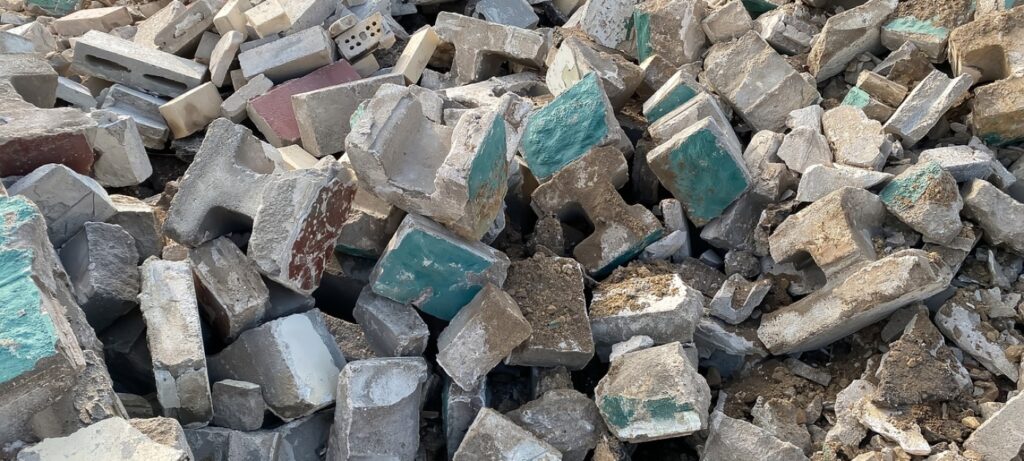Nairobi, 18 June 2024 – The environmental impacts of the war in Gaza are unprecedented, putting the region at risk of rapid and widespread soil, water and air pollution, and irreversible damage to natural ecosystems, according to a preliminary assessment released today by the United Nations Environment Programme (UNEP). UNEP reiterates its call for an immediate ceasefire to protect lives and ultimately mitigate the environmental impacts of the conflict.
“Not only are the people of Gaza dealing with immense suffering from the ongoing war, but the severe and growing environmental damage in Gaza risks locking people into a painful and long-term recovery. While many questions remain about the exact types and quantities of contaminants affecting Gaza's environment, people are already living with the effects of conflict-related damage and contamination to environmental control systems. Water and sanitation have collapsed. Critical infrastructure continues to be devastated. Coastal areas, soils and ecosystems have been severely affected. All of this is severely undermining people's health, food security and Gaza's resilience,” said UNEP Executive Director Inger Andersen.
“A ceasefire is urgently needed to save lives and restore the environment so Palestinians can recover from the conflict and rebuild their lives and livelihoods in Gaza.”
For decades, Gaza's environment has faced ecological degradation and pressure as a result of repeated conflicts, rapid urbanization, high population density, political instability and the region's vulnerability to climate change.
Preliminary evaluation results:
The conflict undermines recent, albeit limited, progress in Gaza’s environmental management system, including the development of desalination and wastewater treatment plants, a rapid increase in solar power generation, and investments in the restoration of the Wadi Gaza coastal wetlands. The conflict has generated an estimated 39 million tons of debris. The amount of debris per square meter in the Gaza Strip now exceeds 107 kilograms. This is more than five times the amount of debris generated in Mosul, Iraq, in 2017. The debris poses risks to human health and the environment due to contamination with dust, unexploded ordnance, asbestos, industrial and medical waste, and other hazardous materials. Bodies buried under the rubble must be handled carefully and appropriately. Removal of the debris will be a large and complex task and must begin as soon as possible to allow other types of recovery and reconstruction to proceed. Water, sanitation, and hygiene systems are almost completely non-functional. Gaza’s five sewage treatment plants have been closed, and sewage is contaminating beaches, coastal waters, soil, and freshwater with numerous pathogens, nutrients, microplastics, and harmful chemicals. This poses immediate and long-term threats to the health of Gaza's people, marine life, and croplands. The solid waste management system has been severely damaged, with five of the six solid waste treatment plants in the Gaza Strip affected. By November 2023, 1,200 tons of garbage will accumulate daily around camps and shelters. A lack of cooking gas has forced households to burn wood, plastic, and waste instead, putting women and children at particular risk. This, plus fires and fuel burning, may have caused a sharp decline in Gaza's air quality, although no open-source data on air quality in the Gaza Strip is available. Munitions containing heavy metals and explosive chemicals have been deployed in Gaza's densely populated areas, contaminating soil and water sources, posing risks to human health that will persist long after the cessation of fighting. Unexploded ordnance poses serious risks, especially to children. The destruction of solar panels is expected to lead and other heavy metals to leak, posing new types of risks to Gaza's soil and water. Hamas' tunnel system and Israeli sabotage could exacerbate environmental damage: Preliminary assessments warn of long-term risks to human health from groundwater contamination, depending on the standards of tunnel construction and the extent to which water is pumped into the tunnels, as well as risks to buildings built on potentially unstable ground.
Constrained by the security situation and limited access, the preliminary assessment was based on remote sensing assessments, data from Palestinian technical institutions, consultations with multilateral partners, previously unpublished material from UN operations on the ground, and scientific literature.
The authors conclude that addressing the Gaza Strip's immediate and chronic environmental problems is important for the health of the population and needs to be integrated into rehabilitation and reconstruction plans. Environmental analysis, including assessment of contamination from munitions and other conflict-related contamination, should be an integral part of rehabilitation and reconstruction plans. Reconstruction of the Gaza Strip will also need to address chronic environmental problems that existed before the war.
Once safe conditions are in place and access is permitted, UNEP will carry out on-site assessments of the extent and type of environmental degradation. Remediation measures will be developed in consultation with Gaza's scientific and research community, experts from the public and private sectors, and civil society, including women and youth.
This preliminary assessment is in response to a formal request from the State of Palestine in December 2023. UNEP is mandated to assist States, upon request, with pollution mitigation and management in areas affected by armed conflict and terrorism, in accordance with the mandate of the United Nations Environment Assembly (UNEA), including resolutions 2/15, 3/1 and 6/12.
Notes to editors
About the United Nations Environment Programme (UNEP)
UNEP is the world's leading environmental organization. We provide leadership and encourage partnerships in protecting the environment by inspiring, informing and supporting countries and their peoples to improve the quality of life for future generations without compromising that of future generations.
For further information, please contact:
United Nations Environment Programme News and Media Unit



